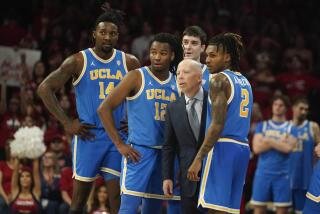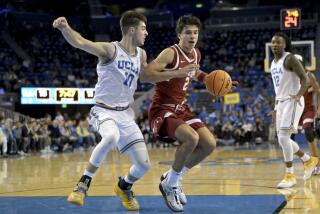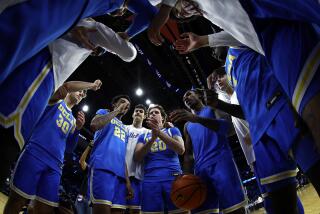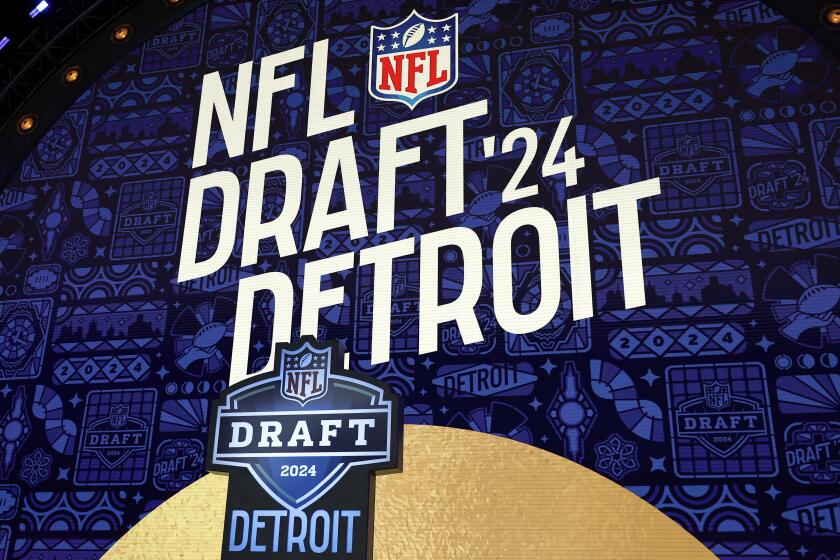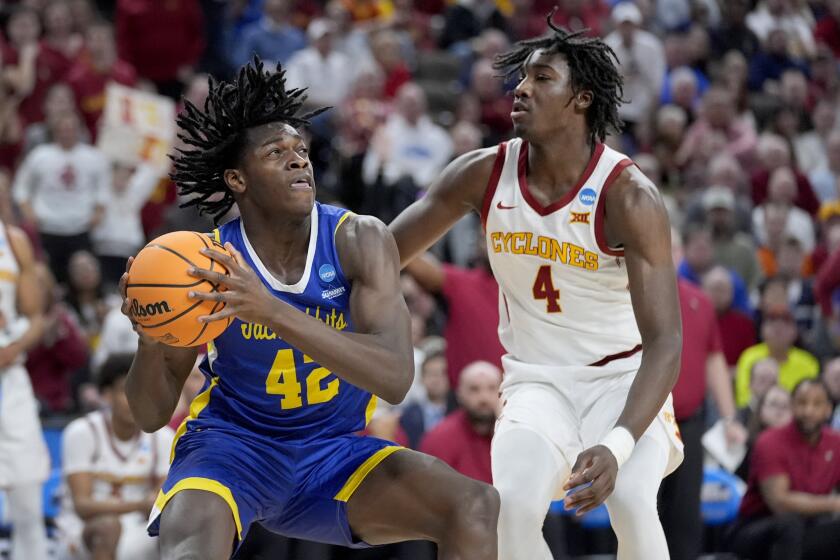UCLA freshman forward Kevon Looney quickly grabs hold of college game
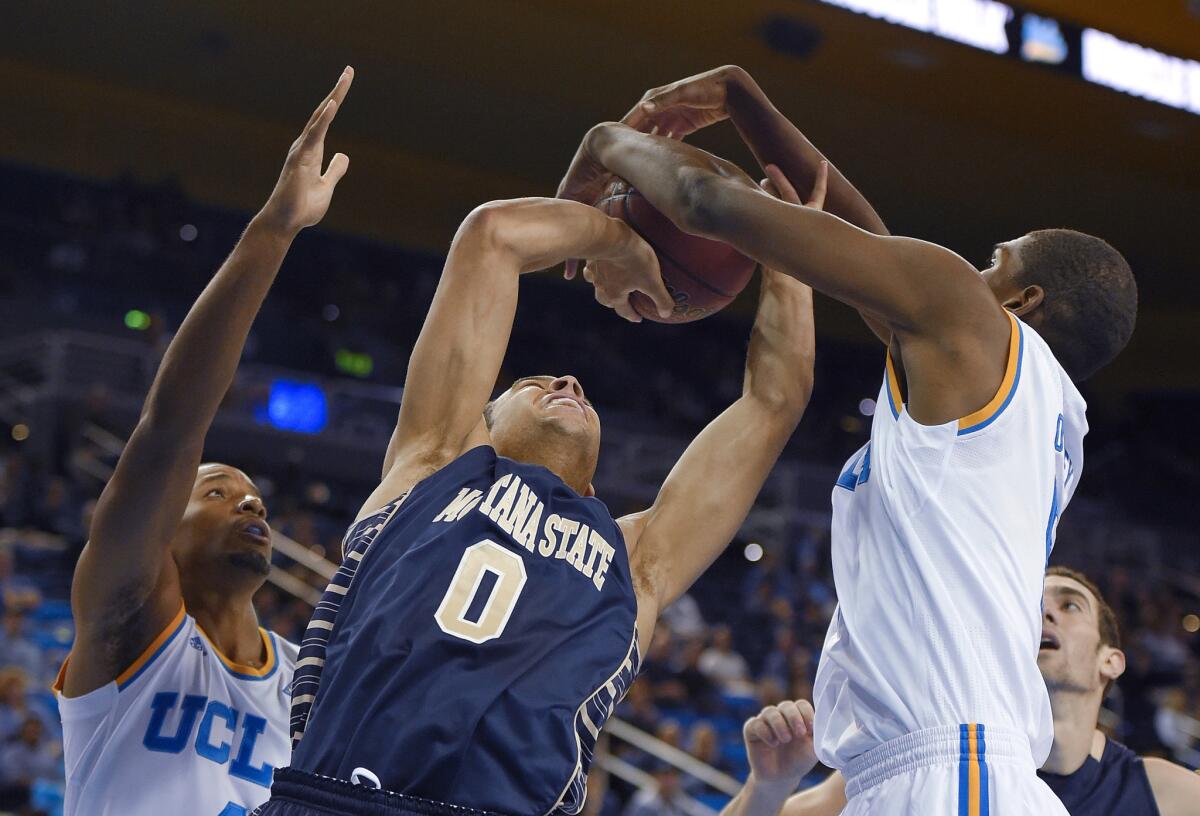
His basketball teammates can’t explain it beyond simply attributing it to his good instincts, but UCLA can be reasonably sure that after a miss, Kevon Looney will be there to gobble up the rebound.
“Usually I know as soon as it’s shot,” explained Looney, a freshman forward. After that, he said, “It’s about me getting there.”
Looney is 6 feet 9 with a 7-5 wingspan and is versatile enough to play guard. So he physically and athletically has a head start in the chase for a rebound.
But early on, he has also displayed a natural ability to read bounces and quickly analyze angles. In his first two games — both UCLA victories — he is averaging 19.5 points and 11.5 rebounds.
“I’m not saying it was easy,” UCLA Coach Steve Alford said. “But you didn’t see him forcing anything.
“What is he, 19 and 12 practically through two games? That’s unheard of.”
Looney leads the team in rebounds, and is a half point behind leading scorer Norman Powell. It won’t be long, Alford said, before Looney climbs up opposing team’s scouting reports and draws more interest.
But Looney, too, has room to grow. His shooting has been off, he said, as he adapts to the college game. He is one for four on three-point attempts. He said he wants to spread the floor more.
“We knew he was good,” Alford said. “But what he’s done through two games to start your collegiate career is special.”
In the zone
Under former coach Ben Howland, UCLA played zone defense only grudgingly.
“Once in a blue moon,” Howland once said.
This season, the Bruins’ defense has allowed more than 70 points in both games. However, UCLA’s zone defense has been “really good,” Alford said.
“Definitely a lot further ahead than the man right now,” he added.
UCLA has used 2-3 and 3-2 looks, but the Bruins have also showed a new set: the 1-3-1. UCLA didn’t use the 1-3-1 last season, but as the coaches learned more about their personnel, they’ve devised ways to take advantage of their length, Alford said.
The 1-3-1 can often disrupt offensive momentum and force turnovers. Most teams don’t practice sets against that look.
The zone has other advantages, Bryce Alford said. It helps the transition to offense because the guards mostly remain up top for a quick outlet pass. The zone typically hurts the rebounding effort, but teams wary of UCLA’s speed, as Coastal Carolina was in the Bruins’ last game, may sacrifice rebounds to get back on defense.
“It’s got a chance to grow into a very good defensive team,” Steve Alford said. “And if we’re going to be successful as the year goes along, that’s what it’s going to have to develop into.”
More to Read
Go beyond the scoreboard
Get the latest on L.A.'s teams in the daily Sports Report newsletter.
You may occasionally receive promotional content from the Los Angeles Times.
